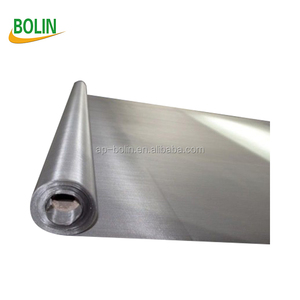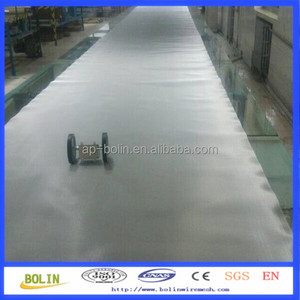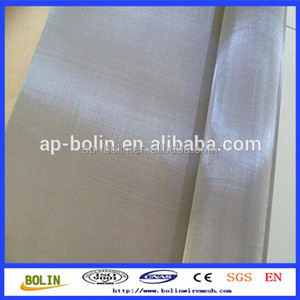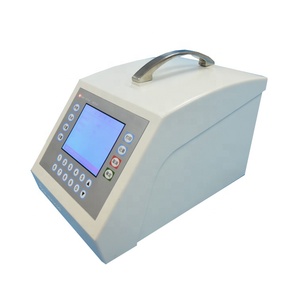
All categories
Featured selections
Trade Assurance
Buyer Central
Help Center
Get the app
Become a supplier

(1100 products available)









































The bubble filter integrity tester is important for many industries. They come in various types, each suited for different applications and environments. Here are the most common ones.
The function of bubble point testers is to check the integrity of filters by determining the minimum pressure needed to cause bubbles to form on the filter surface. When a wetted membrane filter is subjected to a liquid, the bubble point pressure is the point at which gas will pass through the membrane in the form of bubbles. If liquid holds back bubbles, it means the pore size is still intact. If bubbles appear at lower pressure, it means the membrane has pores larger than intended or the filter is damaged.
Diffusive filter bubble test equipment checks bubble formation when filtered gas passes the filter. No bubbles detected during the test means filter integrity is ok. If bubbles form, it means the filter is damaged. This test is less common than the bubble point test and is mainly used when a simple and fast test is needed.
These testers check filters using water and air. Pressurizing water behind a filter shows whether the filter can stop liquid. If water breaks through, the filter has tiny holes or is broken. This test is often used for fuel or water filters.
Steam test equipment exposes filters to steam and checks for any breakthrough. It simulates filter use in sterilization processes. If steam passes through, the filter is not working properly. These testers help ensure filters can withstand high heat and germs.
Visual filter integrity tester equipment uses light to look at filters and find damage or dirt. It can spot tiny holes the naked eye can't see. This tester provides a fast check before performing other more detailed tests. While quick, it may miss very small defects that affect filter performance.
The pharmaceutical industry heavily relies on filter bubble integrity testing to ensure the purity and safety of its products. Filters used in this industry, especially those in liquid sterilization and air filtration processes, must be free from defects to prevent microbial contamination. For instance, during the production of injectable drugs or vaccines, any breach in the filter could lead to contamination, resulting in health hazards and product recalls. That's why we find filter bubble integrity testers as a staple in this industry.
Similar to pharmaceuticals, the food and beverage industry uses filters to remove impurities, yeasts, and bacteria from liquids like juices, wines, and brewed beverages. A compromised filter can result in spoiled products, which can endanger consumers' health and lead to financial losses for the manufacturers. Regardless, with effective filtration in place, businesses can avoid such mishaps. That's why filter bubble integrity tests are crucial to the food and beverage industry. They help ensure that all filters are in prime condition before being put to use.
The oil and gas industry uses filters to separate debris, water, and contaminants from fuels and other fluids. In this high-stakes environment, a failure in filtration can result in costly equipment damage or even dangerous explosions. Integrity testing ensures filters perform at their best, safeguarding both workers and equipment. In this situation, testers are often used when working on onshore and offshore drilling and production, where conditions are challenging.
In semiconductor manufacturing, the purity of water and chemicals used in the process is critical. Any contamination can lead to defective products. This industry relies on filter bubble integrity tests to ensure all particles, including those larger than 0.01 microns, are removed.
Aerospace and defense industries use filter testers for critical applications in fuel purification, hydraulic systems, and air quality control in spacecraft and aircraft. Any failure in these systems can have catastrophic consequences, making filter integrity testing vital. In these applications, testers often go beyond standard tests, checking filters for extreme conditions such as high altitudes, changes in temperature, and exposure to corrosive substances. They also need to be highly durable and portable.
Laboratories use filter bubble integrity tests to protect sensitive experiments and equipment from contamination. In research labs and quality control environments, filters are used to purify air, water, and chemicals. Filter failure in these environments can result in skewed test results, damaged equipment, or even failed experiments. They are particularly important in labs working with biotech, chemicals, and materials science.
Precise Detection
Bubble point testers detect small pressure changes to find filter defects. They make tests accurate by measuring down to a tenth of psi or less. This lets users catch tiny holes or cracks.
Automated Testing
Many testers run bubble tests without help. They fill filters, raise pressure, and check results by themselves. This saves users time and makes testing quicker.
Robust Design
Tester designs are often tough inside and outside. They reliably test in factories, labs, or the field for years. Hard use should not break them down.
Versatile Use
Bubble point testers can test many filter types. Membranes, cartridges, and more of different materials and porosities are supported. One tool can work for most needs.
Clear Results
The tester screen shows easy test answers. Users get instant feedback on filter health. No confusing charts or small print.
Select Filter Location
The test rig should be located near the filter to minimize leakage during setup. The space around the tester should provide good access.
Securely Mount
Filters should be attached tightly in the test rig. This prevents movement that could cause internal damage during testing.
Connect All Pipes
All hoses and pipes should be linked between the rig and the filter. This forms a closed loop. Sealing materials should be checked to ensure they are in good condition to prevent leaks.
Fill with Liquid
The area behind the filter should be filled with water or wetting liquid. This wet conditions the filter.
Remove Air
Air trapped in the system should be removed. This is important because any air left could lead to inaccurate test results.
Apply Pressure
A pump or other means should be used to gradually increase pressure. This should be done carefully to avoid damage from sudden high pressure.
Record the Reading
Pressure levels should be noted once stable. Readings must be tracked throughout the test.
Prepare Tester
Before beginning, the tester must be prepared by choosing the correct settings based on the specifications of the filter that will be tested. The filter should then be installed securely within the tester to ensure stability during the testing process.
Initiate Test
The test medium, usually air or water, should be applied to the filter. The pressure must be increased gradually while monitoring the filter closely. The bubble point pressure is the point at which bubbles consistently form from the test fluid.
Analyze Results
The number of bubbles released is directly proportional to the pressure applied. The pressure reading at this point must be recorded. The results must be interpreted by comparing the recorded pressure to the filter manufacturer's bubble point threshold. If the pressure is higher than the threshold, the filter is compromised and needs replacing.
Regular Cleaning
The integrity tester should be cleaned frequently after each use. Particles or liquids left on the machine can cause sepsis, affect future tests, and deter accuracy.
Software Updates
Updates to the tester software should be done whenever the manufacturer announces an update. This helps keep it secure and working well.
Frequent Calibration
The tester should be calibrated occasionally to verify it is giving accurate pressure and integrity readings. Calibration schedules should follow the manufacturer's recommendations.
Periodic Inspection
During routine checks, parts such as gauges, hoses, and pumps should be looked at for wear. Any broken items should be replaced right away to prevent problems.
Spare Part Availability
Having replacement parts on hand should be considered, so the tester could be repaired in a timely manner if something fails. This helps avoid long test delays.
On such equipment, quality and safety checks by independent organizations may have been performed. These groups, such as ISO and CE, make companies trust that devices are safe, work well, and reduce contamination risk.
Ensuring that test tools, such as pressure gauges and bubble point testers, are working correctly helps tests give reliable answers. If tools break or get old, they can give wrong results that allow bad filters to slip through.
By identifying weak spots in filters before they are used, integrity tests lower the chance that germs or dirt will get into clean areas. This protects the products being made and the people who use them.
Pressure inside test rigs can reach high levels, so safeguards like pressure release valves are needed. These automatically release extra pressure if it gets too high, preventing sudden blows that could hurt workers or break equipment.
Users of test devices should closely follow steps the makers laid out. This ensures tests are done safely and correctly. If steps are skipped or changed, it could put workers at risk and lead to faulty results.
It is imperative to wear safety gear like gloves, goggles, and masks during testing. Filters can trap dangerous materials, and when released, they could potentially harm someone. Taking this precaution has more benefits than just safety. It also helps workers focus more on their tasks instead of being paranoid about what might have been caught by the filter.
It is important to train all workers before starting the tasks at hand. Not knowing how to properly set up equipment, handle filters, or respond in emergencies can lead to accidents.
Filters, especially those used in high-stakes industries like pharmaceuticals and food processing, must be handled very carefully. This is because damage, either visible or microscopic, can compromise the filter's integrity.
A1: It's used to check that filters are working. It tests how much pressure they can take without letting anything through. This makes sure the filter is not damaged or too small.
A2: The main benefit is peace of mind. Companies know filters are doing their job safely. This keeps harmful things from getting through. It also helps avoid repairs and keeps work moving.
A3: Without testing, filters could let things slip through. This might contaminate products or hurt people. It could also damage machines if too much dirt gets inside. This leads to costly fixes and delays.
A4: Testers need maintenance if they start acting strangely, like giving wrong answers. Regular check-ups will help catch problems early before testing stops working entirely.
A5: Factory workers or quality control teams often handle testing. With training, they learn to use the tester safely to get good results.